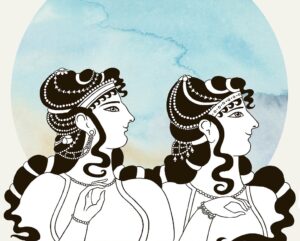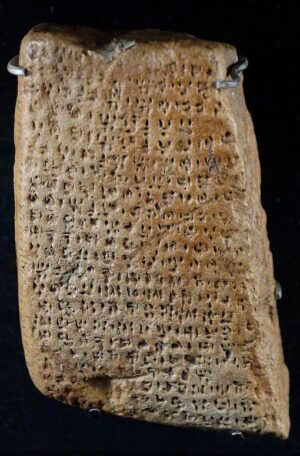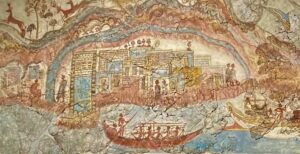
Most of us have heard or read about the great Trojan War and the epic journey of Odysseus (otherwise known as Ulysses) through the legendary characters and events as described by Homer in his famous literary works, The Iliad and The Odyssey. Fewer, however, have a more than passing knowledge of the ancient Bronze and Iron Age peoples who formed the historical basis for Homer’s epic stories, such as the Mycenaeans and Minoans. The real story of these civilizations has slowly come to light through the painstaking efforts of archaeologists and scholars, popularized by the media over the years, but documented and studied more meticulously within the halls of academia. Despite the efforts to come to a greater understanding, mysteries still abound and there are more questions than answers.
Dr. Ester Salgarella, who received her Ph.D from Cambridge University and subsequently conducted post-doctoral research at the university, has developed and released a new podcast series, entitled Aegean Connections, that explores all facets of these civilizations, bringing the research out from the confines of the scholarly “ivory tower” and into the listening ear of the general public. She does this by conducting interviews of the very scholars who engage in the study and research, focusing on such topics as undeciphered scripts, the life-ways and origins of these Aegean peoples, and many other topics to “build a bridge between scholars (both well-established and early-career) in Aegean-oriented academic fields and the wider audience….,” according to Salgarella.

Tablet inscribed with Cypro-Minoan 2 script. Late Bronze III
Provenance: Enkomi, Cyprus. Louvre, Public Domain, Wikimedia Commons
The first and opening episode of the series, released on February 13, 2024, interviews Dr. Cassandra Donnelly, a post-doctoral researcher working on Cypro-Minoan (CM) inscriptions at the University of Cyprus. Otherwise known as the Cypro-Minoan Syllabory, the script is still undeciphered but was used on the island of Cyprus and its trading partners during the late Bronze Age and early Iron Age (c. 1650–1050 BC). The term “Cypro-Minoan” was coined by archaeologist and explorer Arthur Evans in 1909 due to its visual similarity to Linear A, an undeciphered script of the ancient Minoans, discovered on Crete. CM is theorized to have been derived from that script. Several hundred CM inscriptions have been recovered by archaeologists on clay balls, votive stands, cylinders, and clay tablets Discoveries were made primarily on Cyprus but also at the site of the ancient city of Ugarit on the coast of Syria.
This opening podcast explores what we now know, and what we don’t know, about this mysterious script. Anyone can listen to the podcast, which is free to the public.
____________________________

Above: Fresco wall painting detail created by an ancient Minoan artist at Akrotiri, depicting a city and the seafaring adventures of this maritime civilization.
____________________________
Cover Image, Above: Image by Vektorianna, Pixabay



